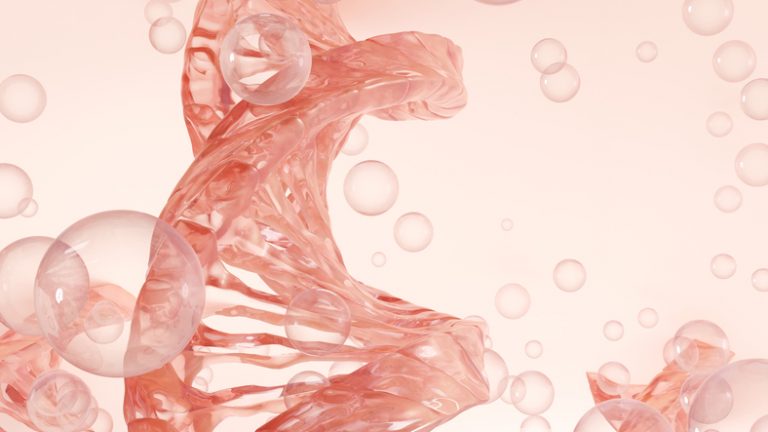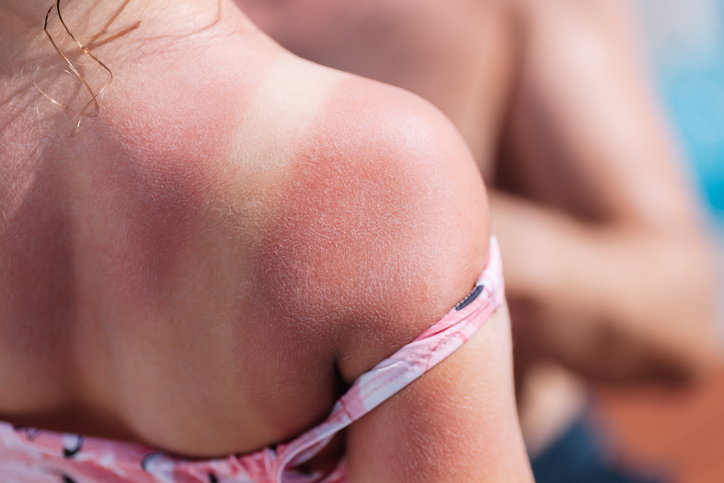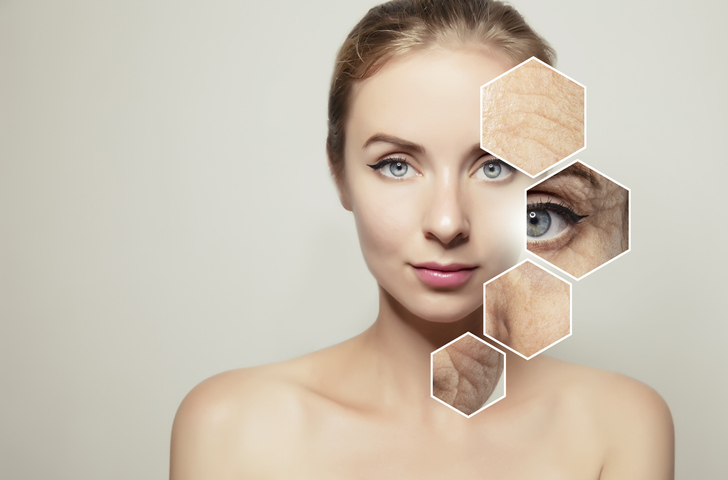
Why You Shouldn’t Put Off Setting Up a Skin Treatment Plan (Even if you think you don’t need one)
Skincare treatment plans are essential for keeping your skin healthy and looking its best. But what is a treatment plan, and why should you have one?
Dr Michael Rich is a specialist dermatologist who has been performing tumescent liposuction for over 30 years. Find out if Liposuction is suitable for you at ENRICH Clinic.
At ENRICH Clinic, we have a wide range of dermatological and cosmetic body treatments tailored to individual body and patient needs.
At ENRICH Clinic, our treatments are performed by our medical team consisting of doctors, nurses, and dermatologists and are tailored to each patient’s skin health needs.
ENRICH Clinic is committed to your skin health and well-being with a range of dermatological & cosmetic treatments tailored to the individual. Our treatments are performed by our medical team consisting of doctors, nurses, and dermatologists.
Skin health is essential for everyone. ENRICH Clinic has a wide range of technologies and dermatological solutions to help you achieve your skin care goals.
A suture lift and a thread lift are forms of non-surgical mini lifts. Both are less severe or invasive forms of facial tightening than a facelift. They still bring skin backwards and upwards to give the impression of a more youthful tightness, but just not as much. A thread lift is particularly useful for sagging around the chin and jaw, laxity around the mouth, and for cheeks that may droop to make prominent jowls.
While thread lifts and suture lifts may seem the same on the surface, they have key differences and shouldn’t be confused. The thread lift uses dissolvable threads and exerts its effect by stimulating collagen production, while the suture lift thread does all the heavy lifting and stays put. There are several types of thread/sutures available, with each having benefits. Thread and suture lifts are best between ages 35-60 and fill the gap between a surgical facelift and general skin laxity.
Your doctor inserts a dissolvable thread via discreet insertion points into the jawline and mid-face. The thread actively stimulates collagen production, which increases facial volume and restores the shape of the face over time. You can expect about 20% of the lift you would get from a surgical facelift with thread lifts.
The suture lift is a skin-tightening and lifting procedure using medical-grade sutures to tighten the skin, lifting the skin from the jawline and mid-face. Suture lifts can often give more tightening and “lift” than a thread lift, but they are of the same “family”. Sutures do not dissolve.
Using a long, fine needle, your doctor places stitches underneath the skin, typically in the lower-mid facial area. There is just one entry and exit hole for the needle, which means no marks appear on the face. The stitches are then pulled tight by Dr Rich to lift and smooth the skin immediately. We then tie the suture behind the ears and in the scalp line so they remain hidden. You will notice a difference in the way your face is lifted. This can relax a little over time as the collagen starts to form and the sutures settle.
We perform the thread lift using a type of suture known as prolene. Prolene does not absorb moisture, is completely synthetic (so it won’t break down), made of polypropylene. It is not reactive or an allergen and is very durable, allowing the thread to stay put for long periods of time, years sometimes. Prolene is used to close soft tissue during other types of surgery, so is well-understood and commonly used in medicine.
The tissue grows around the suture and holds it in place, in theory, for a long period of time, though this may not always be the case. No tissue is actually removed, very little depth is penetrated, and you can’t see the threads. Only a local anaesthetic is required for the procedure; however, a general anaesthetic can be used if required but not recommended as a general anaesthetic is always a bit riskier. Dissolvable stitches are then used to close the incisions behind the ear, which will close up and heal as per normal stitches, with virtually no scarring.
Facelifts are a very invasive procedure. During a facelift, a flap of skin on each side of the face is pulled back. Tissues below the skin are altered, and excess skin is removed.
With thread and structure lift procedures, they merely use what’s already there, providing scalpel-free tightening. This lightweight solution to laxity suits many people far better than surgery.
Surgical augmentation requires longer recovery times than a thread lift, as the areas near the hairline are cut and removed, and muscles are tightened simultaneously. Risks are always higher with any operation, and this is no different. Surgery is beneficial in certain circumstances, but not usually for anyone who has previously had a facelift and has new laxity or for anyone who isn’t ready or able to undergo an operation.
Suture & thread lifts offer a viable alternative with minimal incisions near the back of the ears in a crease or hairline where they are virtually invisible. Therefore, recovery is far shorter and more comfortable, with lifting results but not as dramatic as a full facelift.
If someone was looking for it, the only sign of a suture lift is a small fold or wrinkle in front of the ear caused by the pulling, though this tends to settle over several months. This can usually be covered by hair.
A thread lift has small holes at the insertion points around the jawline and mid-face that are very small and heal in a few weeks.
At ENRICH Clinic, we use both Mint & Silhouette brands.
You can resume normal daily activities the day after your suture or thread lift, but it is wise to take a day or two off just to be comfortable. Some bruising and swelling are customary, and some discomfort may be experienced, but you will be prescribed painkillers if needed.
Having more than one treatment can boost the results; for example, lasers stimulating collagen and elastin and increasing your cells can make a huge difference. These extra and ongoing anti-ageing procedures can make your results last much longer.
In some cases, Dr Rich may even combine the suture and the thread lift treatment in one procedure, depending on the patient’s needs.
Both these lift procedures are generally well-tolerated, and recovery tends to be a week or two and only with some initial discomfort. The most likely and common outcome is some bruising and swelling. Risks include the small wrinkle/fold at the ear, and sometimes pain can be felt in or around the ear. Occasionally, we need to do another procedure to retain the benefits.
The results of both types of lifts can last for quite a while, years, but over time the threads will shift and become looser, and sutures will also loosen. We can’t stop ageing either, so further sagging will continue to occur. This means you can undergo other practical cosmetic marvels in the interim, but another treatment may be required a few years later and sometimes sooner.
Sometimes the skin will even stay tighter as it heals into the new position, but this isn’t the norm. Top-ups are usually less costly than the initial procedure.
If you don’t like the results or something irregular occurs with healing, the threads can be adjusted easily within the first month. If needed, the threads may need to be removed and replaced.
At ENRICH, wherever experienced at thread lifts, however, sometimes the body has a mind of its own when it comes to how it heals, and adjustments may be required.
How one person’s face looks after a thread lift may vary considerably from another person’s, so photos aren’t always the best way to determine how you will look before and after. The best way to know is to make an appointment for a consultation with our cosmetic consultant or dermatologist. They know can tell you how much can be achieved and in what ways.
PDO Mono Threads are NOT Thread lifts or Suture lifts. They used to tighten and thicken skin, whereas a thread lift procedure uses tiny barbs on the thread to hold the skin up, with the thread lift offering significantly more lift to sagging skin.
Mono threads improve the appearance of fine lines and wrinkles by gradually stimulating collagen and elastin production within the skin over time. They can also be an alternative for those who prefer not to have dermal filler and are prepared to wait for the results. ENRICH Clinic in Melbourne offers both Matrix PDO Mono Threads and thread lifts.
The PDO Mono Threads are a good option for those who want to plump and smooth skin, reducing the visible signs of ageing. These innovative threads can rejuvenate and tighten skin and and help to achieve a firmer, younger-looking complexion.
Your doctor inserts a dissolvable thread via discreet insertion points into the jawline and mid-face. The thread stimulates collagen production around itself, increasing the tightening effect over the coming months.
When performed correctly, thread lifts are understood to be a low-risk, reversible method of providing facial tissue lift. There are some risks to the procedure, including inflammation or irritation, but there have been virtually no adverse reactions recorded beyond this.
You can expect to pay in the low thousands for a thread lift. The cost can be dependant on several aspects including :
There are several brands of thread available to cosmetic doctors, which also contributes to the costs. Each sort has its characteristics and uses and associated costs.
Threads may cause irritation or inflammation of the skin, and rarely the sutures may become visible under the skin. There is a risk of bruising and bleeding and scarring.
Threads may cause irritation or inflammation of the skin, and rarely the sutures may become visible under the skin. There is a risk of bruising and bleeding and scarring.
That depends on which thread we use. Some threads dissolve, while others do not.
If your sutures are supposed to dissolve, they are biodegradable so will be slowly absorbed by the body over about six months. After the threads have dissolved, the collagen deposits remain, keeping the lift for a while longer.
If your threads are non-biodegradable, they will remain in the skin unless removed, possibly replaced or tightened.
Threads can be removed, tightened or adjusted after the procedure, but if the threads are dissolvable, they start to dissolve into your tissue and removal becomes impossible. The threads have then become part of your face and will be absorbed.
If the positioning isn’t right or there is a rare adverse reaction, you can pop back into the clinic, and we can adjust or remove the threads without issue, especially non-biodegradable types.
We must make two incisions, usually just in front of the ear, which as is natural, leaves a small scar. We always put the incision in a crease where it is invisible, so nobody will be able to tell that you’ve had the sutures put in. These scars are very small and will fade naturally over time, and the hair usually covers the small fold.
We can offer up to about a 20 per cent lift with a standard thread lift. If we use other skin tightening treatments, we may be able to increase this; however, the amount of lift you will achieve is individual.
How much lift you will get depends on how elastic your skin is. If you have a great deal of sagging and wrinkling, the results won’t be as dramatic.
There has been much debate about the thread lift and how it measures up to a surgical facelift. The fact is, these two treatments couldn’t be more different and are incomparable when laid side by side.
Nothing is ever going to get as much lift as a surgical facelift, it’s the ultimate lift, but the point is, the thread lift isn’t trying to be a facelift. The thread lift offers a non-surgical mild lifting option, not in competition with, but as an early intervention tool when compared with the facelift. The facelift
should be considered an advanced anti-ageing tool, while the thread lift is, while not exactly entry-level anti-ageing, close.
A facelift is a surgical procedure, while a thread lift is not. A thread lift is minimally invasive – you’re implanting a thread under the skin – but it is in no way comparable to the invasiveness of a facelift.
You can expect to have an appointment for about an hour, with the thread lift itself taking about 30-45 minutes. You may need to factor in some post-treatment swelling and redness, so plan your appointment and day accordingly.
You can expect your results to last for up to two years. Usually, we’d see you well before then for the other elements of your anti-ageing strategy, however, if we don’t, make an appointment when you start to see the treatment losing its effect, and we’ll figure out what the best approach is.
You don’t need to take time off work to have a thread lift, but you may prefer to schedule the rest of the day off or get a late appointment if you don’t want anyone to see the impact.
Usually, the face is the treatment area of choice, but other areas of the body may benefit from skin tightening using these sutures. Body areas may require special types of thread compared with facial lifting. Body threads are thinner, able to be wound through larger surface areas that do not require lifting as such, but more to stimulate collagen production for tightening.
Both lift are a walk-in walk-out procedure. You can expect some redness, possibly bruising, and a little swelling, but this will disappear over 24-48 hours. Suture lifts often require at lest a day or of recovery.
It’s not useful for those with supple, elastic skin to get a thread or suture lift, as there is nothing to lift, while the procedure is not enough to make a meaningful difference in inelastic, aged skin. What this means in real life is that if you are under 35 or over 65, a thread lift probably isn’t going to be your weapon of choice.
The best candidates for a lift are those with developing jowls and saggy of facial skin, usually around the cheeks and jawline.
You can expect your results to last for up to two years. Keep in mind that if you utilise other anti-aging treatments as well as the suture lift, you maximise results.
Only registered medical doctors are allowed to perform thread lifts in Australia. There are several brands of cosmetic companies manufacturing the threads, which come in many styles and serve various purposes when implanted. Specialists & cosmetic doctors usually have a brand preference, and they received additional training by the supplying company on a specific product to ensure optimal results for patients.
Some lift results will be apparent immediately, however as collagen production increases, results gradually increase over the weeks and months post-procedure. Collagen takes a while to be produced by the body, so visible results do take time.
You can see the maximum effect after about three months, after which the results will stabilise, then gradually disappear with normal ageing over 1-2 years.
Thread lifts can be used on their own, or with a variety of other effective anti-aging treatments. Some of our favourite combination treatments include dermal fillers and anti-wrinkle injections, with complexion-enhancing tools like laser and other energy-based treatments. We have a full arsenal at our disposal, so we can develop you an effective anti-ageing plan based on your specific needs.
We can do thread lifts on the nose, but we wouldn’t, simply because we have other more effective ways to manage the aesthetics of the nose.
The sutures can, theoretically, be placed anywhere on the body for the collagen-producing or lifting effect. We expect over time that more areas of the body will get threaded, but for now, the face is the main treatment area of choice.
Dissolvable stitches have been used in surgery and medicine for many decades now, is a revolutionary invention. Dissolvable stitching has proved to be a safe, effective and reliable tool, and in most cases, dissolvable stitches are the go-to in most surgery.
The materials used to make these stitches are biologically inactive and benign, not known for allergic reactions or irritation, which is why they are so widely used. The same type of material used in dissolvable stitches is used with our sutures in our suture lift. The bodies natural response to these foreign bodies introduced into the skin is how we stimulate the collagen that is responsible for the longer-lasting lift.
Cosmetic medicine has taken the dissolvable stitch, revamped it for its new role, and put it to good use as an anti-aging tool.
*With all surgeries or procedures, there are risks. Consult your physician (GP) before undertaking any surgical or cosmetic procedure. Please read the consent forms carefully and be informed about every aspect of your treatment. Surgeries such as liposuction have a mandatory seven-day cooling-off period to give patients adequate time to be sure of their surgery choice. Results may also vary from person to person due to many factors, including the individual’s genetics, diet and exercise. Before and after photos are only relevant to the patient in the photo and do not necessarily reflect the results other patients may experience. Ask questions. Our team of dermatologists, doctors and nurses are here to help you with any of your queries. This page is not advice and is intended to be informational only. We endeavour to keep all our information up to date; however, this site is intended as a guide and not a definitive information portal or in any way constitutes medical advice.
"*" indicates required fields

Skincare treatment plans are essential for keeping your skin healthy and looking its best. But what is a treatment plan, and why should you have one?

We’ll take a closer look at what collagen is, where it’s found in the body, and what it does. We’ll also explore the evidence for and against collagen supplements and whether they’re necessary for maintaining good health.

Rising temperatures, air pollution, and UV radiation contribute to an increased risk of skin problems. See the list of some of the ways climate change is impacting our skin health.

In this article, we will look at the different stages of skin ageing, what you can expect depending on your age, and some great treatment options you might like to consider.
Subscribe to the ENRICH newsletter and receive latest news & updates from our team.
Enrich Clinic acknowledges the Traditional Lands of the Wurundjeri Woi Wurrung and Bunurong peoples of the East Kulin Nations on which we work and trade. We pay respect to their Elders past, present and emerging. We extend our acknowledgement and respect to the LGBTQIA+ community who we welcome and support. Read our full Acknowledgement Statement here
